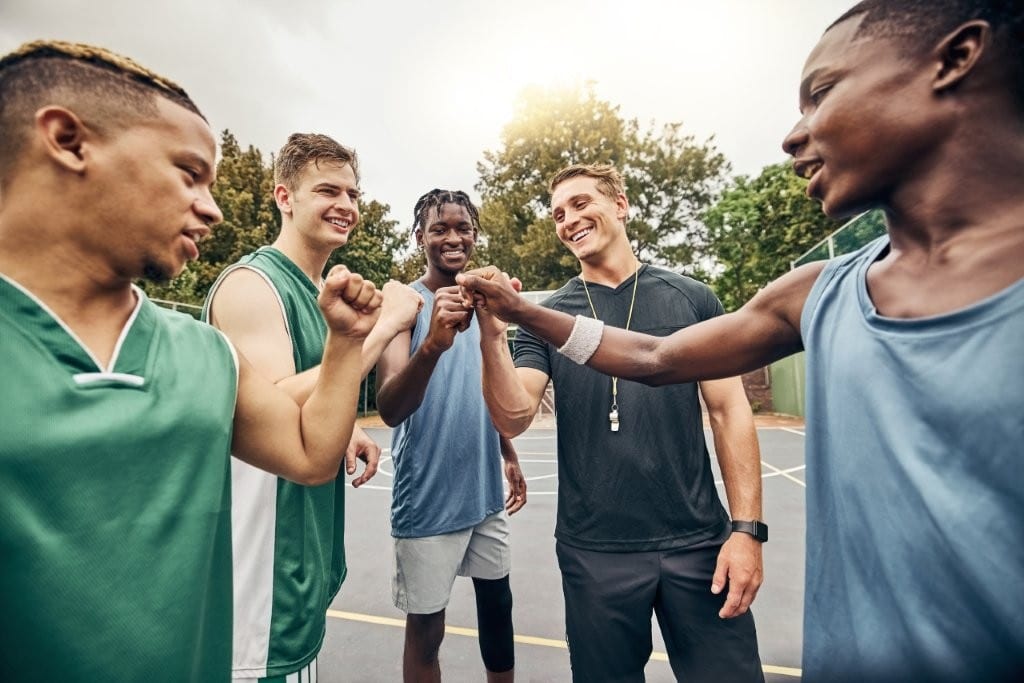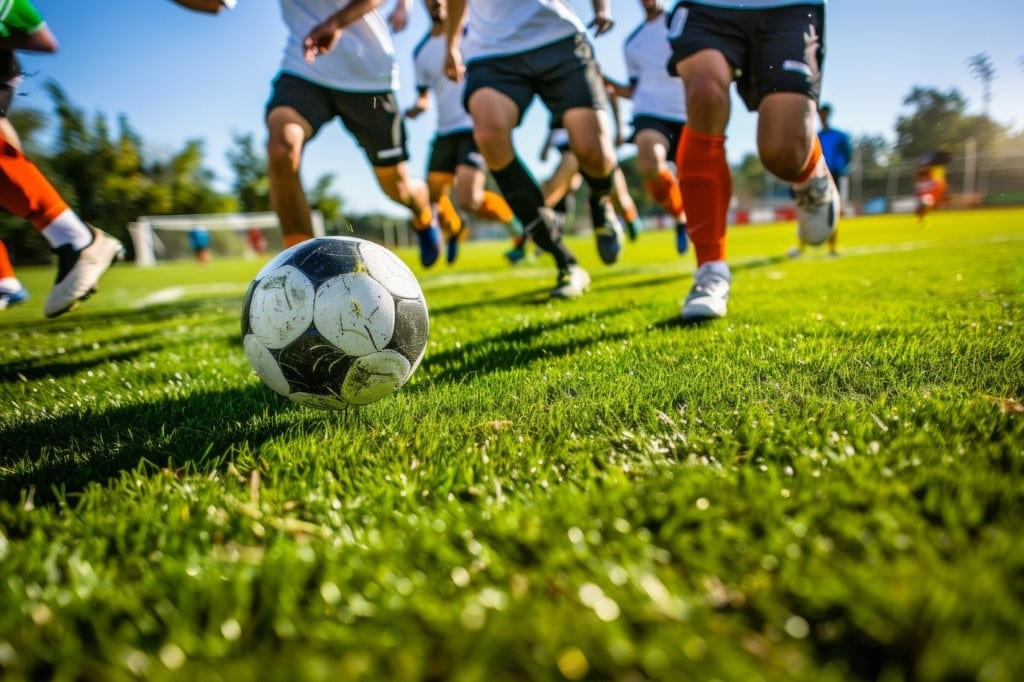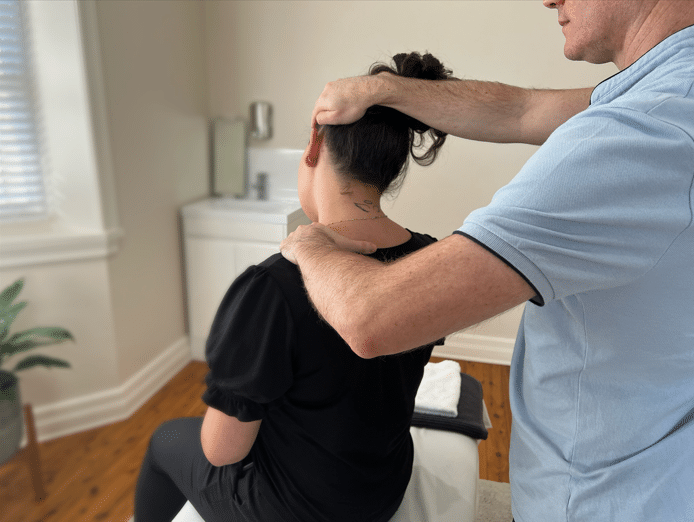- 02 9712 1736
- [email protected]
- 212 Great North Road, Five Dock, NSW 2046
- Open 7 days a week
Introduction
You’ve had a long week at your desk, and now it’s finally Saturday morning – time to hit the tennis court, lace up those running shoes, or join that pickup basketball game! If this sounds like you, welcome to the “weekend warrior” club. Weekend warriors are adults who occasionally play sports or engage in strenuous physical activities, often on the weekends, enjoying staying active and playing hard after sitting at work all week. While getting active is fantastic for your health, there’s a catch: significantly more people are injured on weekends than during the week when it comes to sports activities.
The good news? Most weekend warrior injuries are completely preventable once you know what to watch out for and how to protect yourself. Let’s dive into the three most common injuries that sideline weekend athletes and, more importantly, how you can avoid them.

The Top 3 Weekend Warrior Injuries
Ankle sprains are among the most common sports injuries reported by weekend warriors. Picture this: you’re playing pickleball, making a quick side-to-side movement, and suddenly you feel that dreaded twist. People experience ankle sprains when they turn or roll their ankle and pull the ligament too far, causing pain, swelling, stiffness and bruising.
Why It Happens: Ankle sprains occur when a twisted ankle stretches or tears the ligaments that surround the ankle. They’re especially common in sports that involve sudden direction changes, uneven surfaces, or jumping – think basketball, tennis, hiking, and even casual weekend runs.
How to Prevent It:
Your shoulders take a beating during weekend sports, especially if you love activities with overhead movements. Sports with intense, repetitive overhead arm action like tennis, baseball and golf can cause shoulder injuries, including overuse injuries, strains, dislocations, ligament strains and rotator cuff tears.
Why It Happens: Shoulder injuries can result from sudden trauma like a fall or a blow, leaving older athletes with pain and limited range of motion. Since many weekend warriors were former athletes who no longer train daily, their shoulders aren’t conditioned for intense, repeated use.
How to Prevent It:
Runner’s knee, meniscus tears, cartilage tears, and ACL injuries commonly affect weekend warriors. Your knees are complex joints that bear your full body weight plus the additional stress of sports movements.
Why It Happens: As you age, tendons, cartilage, and ligaments in the knee begin to break down, making inflammation and injury more likely. When runners stop too suddenly, or when athletes are struck in the knee during a contact sport, ACL tears can occur, and often require surgery.
How to Prevent It:
Your Weekend Warrior Prevention Game Plan
Based on recent research, here’s what actually works to keep you injury-free:

Summary
Weekend warrior injuries are incredibly common, but they don’t have to be inevitable. The three most frequent injuries – ankle sprains, shoulder injuries, and knee problems – usually happen because our bodies aren’t prepared for sudden bursts of intense activity after being sedentary all week. The key to staying injury-free is preparation: proper warm-ups, gradual conditioning, appropriate gear, and listening to your body’s signals. Remember, the goal isn’t to avoid sports altogether but to enjoy them safely for years to come.
Behm, D. G., Alizadeh, S., Daneshjoo, A., Konrad, A., Anvar, S. H., Bazgir, B., & Jagodinsky, A. (2023). Potential effects of dynamic stretching on injury incidence of athletes: A narrative review of risk factors. Sports Medicine, 53(7), 1359-1373. https://doi.org/10.1007/s40279-023-01847-8
Dubois, B., & Esculier, J. F. (2020). Soft-tissue injuries simply need PEACE and LOVE. British Journal of Sports Medicine, 54(2), 72-73. https://doi.org/10.1136/bjsports-2019-101253
Konrad, A., Alizadeh, S., Daneshjoo, A., Hadjizadeh Anvar, S., Graham, A., Zahiri, A., Goudini, R., Edwards, C., Scharf, C., & Behm, D. G. (2024). Chronic effects of stretching on range of motion with consideration of potential moderating variables: A systematic review with meta-analysis. Journal of Sport and Health Science, 13(2), 186-194. https://doi.org/10.1016/j.jshs.2023.06.002
O’Donovan, G., Petermann-Rocha, F., Ferrari, G., Lee, I. M., Hamer, M., Stamatakis, E., Sarmiento, O. L., Ibáñez, A., & Lopez-Jaramillo, P. (2024). Associations of the ‘weekend warrior’ physical activity pattern with all-cause, cardiovascular disease and cancer mortality: The Mexico City Prospective Study. British Journal of Sports Medicine, 58(7), 359-365. https://doi.org/10.1136/bjsports-2023-107612
Small, K., McNaughton, L., & Matthews, M. (2008). A systematic review into the efficacy of static stretching as part of a warm-up for the prevention of exercise-related injury. Research in Sports Medicine, 16(3), 213-231. https://doi.org/10.1080/15438620802310784
Thacker, S. B., Gilchrist, J., Stroup, D. F., & Kimsey Jr, C. D. (2004). The impact of stretching on sports injury risk: A systematic review of the literature. Medicine & Science in Sports & Exercise, 36(3), 371-378. https://doi.org/10.1249/01.mss.0000117134.83018.f7
Warneke, K., Freundorfer, P., Plöschberger, G., Behm, D. G., Konrad, A., & Schmidt, T. (2024). Effects of chronic static stretching interventions on jumping and sprinting performance–a systematic review with multilevel meta-analysis. Frontiers in Physiology, 15, 1372689. https://doi.org/10.3389/fphys.2024.1372689
Woods, K., Bishop, P., & Jones, E. (2007). Warm-up and stretching in the prevention of muscular injury. Sports Medicine, 37(12), 1089-1099. https://doi.org/10.2165/00007256-200737120-00006
Arntz, F., Markov, A., Behm, D. G., Behrens, M., Negra, Y., Nakamura, M., Moran, J., & Chaabene, H. (2023). Chronic effects of static stretching exercises on muscle strength and power in healthy individuals across the lifespan: A systematic review with multi-level meta-analysis. Sports Medicine, 53(3), 723-745. https://doi.org/10.1007/s40279-022-01787-9
Cooper, D. J., Peters, D. M., & Cook, M. D. (2023). The effects of static stretching intensity on range of motion and strength: A systematic review. Journal of Functional Morphology and Kinesiology, 8(2), 37. https://doi.org/10.3390/jfmk8020037
Herbert, R. D., & Gabriel, M. (2002). Effects of stretching before and after exercising on muscle soreness and risk of injury: Systematic review. BMJ, 325(7362), 468. https://doi.org/10.1136/bmj.325.7362.468
McHugh, M. P., & Cosgrave, C. H. (2010). To stretch or not to stretch: The role of stretching in injury prevention and performance. Scandinavian Journal of Medicine & Science in Sports, 20(2), 169-181. https://doi.org/10.1111/j.1600-0838.2009.01058.x

Luis is an empathetic osteopath whose gentle approach has helped countless patients find relief from pain and discomfort. With his warm personality and expert hands, Luis creates personalized treatment plans that address both your immediate symptoms and long-term wellbeing. His patients appreciate his thoughtful nature and ability to explain complex conditions in simple terms.
Originating from over in New Zealand, Luis developed a love for osteopathy and manual care from a young age, due to its holistic nature. With a special interest in manual therapy, anxiety and related breathing activities. You will find the care you need with Luis.


About
Five Dock Osteopathic & Chiropractic is located in Canada Bay, in Sydney’s Inner West. Servicing suburbs including Burwood, Croydon, Drummoyne, Five Dock, Haberfield, Concord, Abbotsford, Chiswick, Leichhardt, Wareemba, Russell Lea, Summer Hill, Strathfield.
Clinic hours
Monday, Tuesday, Thursday 7AM – 7PM
Wednesday, Friday 7AM – 6PM
Saturday 7AM – 2PM
Sunday 8AM – 2PM
Contact details